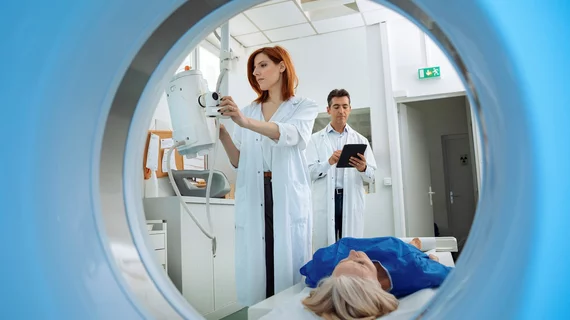Radiologists must embrace low-field MRI or ‘we will be in trouble,’ expert says
A new MRI technology is changing the face of radiology, yet one expert says the specialty must act quickly and embrace these machines or face the consequences.
Jeffrey C. Weinreb, MD, director and chief of MRI services at Yale, noticed a renewed interest in low-field, low-cost MRI during the pandemic. Despite some drawbacks, their device helped manage patients while minimizing infection risks from COVID-19.
The experience also forced Weinreb to consider the long-term implications for his specialty. Labeling these new machines as disruptive technologies, the doc says radiology must move to address and embrace the coming revolution.
“If we ignore it (low-field MRI) and do not simultaneously make measured, logical, competent decisions for the near-term health of our established radiology businesses and focus adequate resources on this disruptive technology, we will be in trouble,” Weinreb, also a professor of radiology at Yale, wrote in an opinion piece published Monday in JACR.
Traditional disruptive tech eventually displaces standard products, which may affect point-of-service brain MRI in emergency settings, outpatient imaging in nonradiologist offices and mobile screening for neurovascular disease, among other possibilities.
So, what does the field need to do? A few “urgent” issues include assessing how low-field MRI may change the relationship between rads and other docs, and possible effects on federal regulations and reimbursement. Questions surrounding training and credentialing along with IT issues should also be top of mind.
Low-field, low-cost MRI scanners are here to stay, Weinreb argued. And given the complex issues facing the specialty, radiology will be best-served taking them head on.
“We can fight it, but that is almost guaranteed to be a losing long-term strategy. Rather, we need to put our collective minds together and address these issues with our eyes wide open and a sense of urgency so that our patients benefit, and perhaps radiology does as well,” Weinreb wrote Nov. 1. “The genie is out of the bottle, and he is not going back.”
Read the entire piece published in the Journal of the American College of Radiology.

